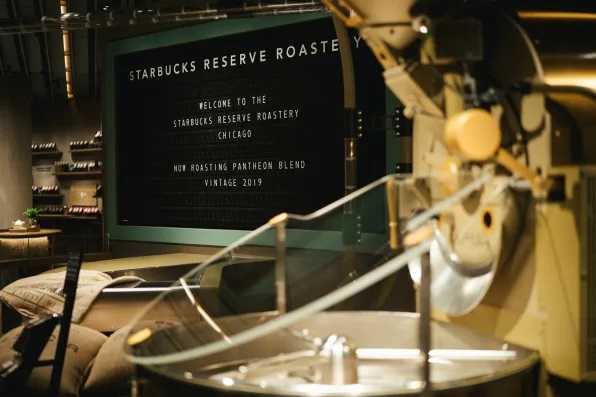* By Mark Wilson
CHICAGO, U.S. – It’s been a while since I walked into a Starbucks that felt special. Oh, the wood finishes and slate menu boards do still bring a touch of class to one’s morning coffee commute. But somehow over the past few years, probably through sheer latte repetition, the carefully designed stores have become less of an indulgence than another mundane part of the upper middle class commercial landscape. There are 31,000 Starbucks stores out there, after all, across 81 separate countries. How special can 31,000 Starbuckses feel?
But as I take my first steps into the company’s brand-new Starbucks Roastery—a four-story, 35,000-square-foot store that’s opened in the former flagship location of Crate & Barrel on Chicago’s Michigan Avenue—I witness the full flex of the $24 billion coffee giant. And it’s hard not to be impressed.
Five years ago, I flew to Seattle for the opening of the first Starbucks Reserve Roastery. Its expansive, copper-clad footprint was at times beautiful, but its industrial loft aesthetic edged into steampunk territory. After opening six such roasteries in the years since, Starbucks has refined its vision for these supersize mega-stores into more than an absurdist spectacle. The new location simply has more poise: a sculptural, four-story retail space full of natural light and panoramic views of Chicago’s ritziest shopping district. You don’t have to appreciate it ironically; it’s a true delight to behold.
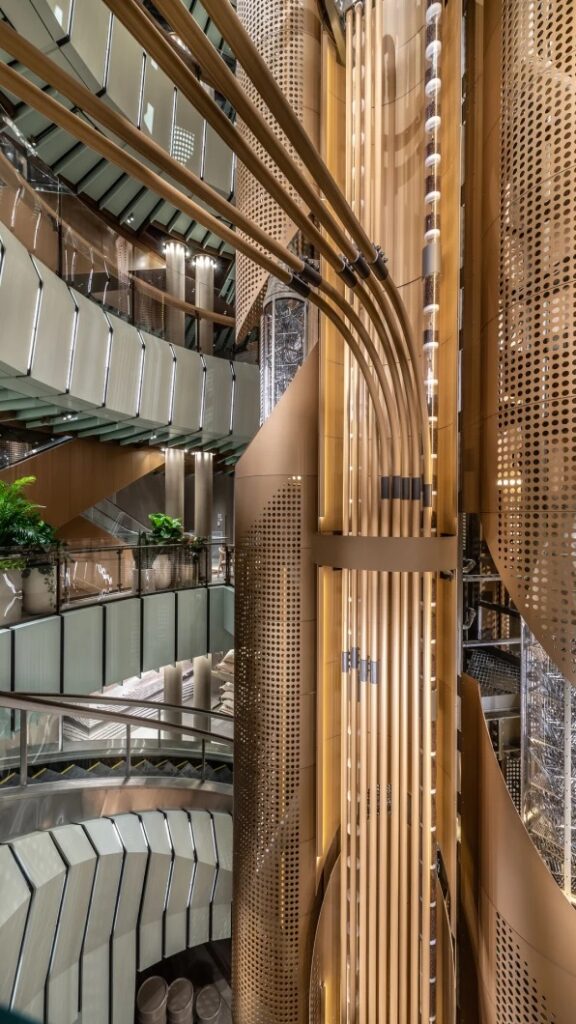 At the store’s heart is a four-story, bronze-clad cask full of beans—think of it as a classy, caffeinated grain silo. All of the beans are roasted on site, degassed, and fed through a curvy and convoluted network of air-powered tubes to coffee bars on each floor. Meanwhile, the ceiling radiates out from this gleaming tower, like a sunburst rendered in five different shades of grayed jade with glints of brass.
At the store’s heart is a four-story, bronze-clad cask full of beans—think of it as a classy, caffeinated grain silo. All of the beans are roasted on site, degassed, and fed through a curvy and convoluted network of air-powered tubes to coffee bars on each floor. Meanwhile, the ceiling radiates out from this gleaming tower, like a sunburst rendered in five different shades of grayed jade with glints of brass.
The color scheme is vaguely reminiscent of the late Chicago retail chain Marshall Field’s. And once all of the privacy paneling is removed from the building’s massive expanse of windows, the interior architecture should be visible from the street. As we ride up a spiral escalator that wraps around the cask toward the second floor, Jill Enomoto, director, Design at Starbucks, explains the greatest challenge of this space—coaxing people all the way to the top.
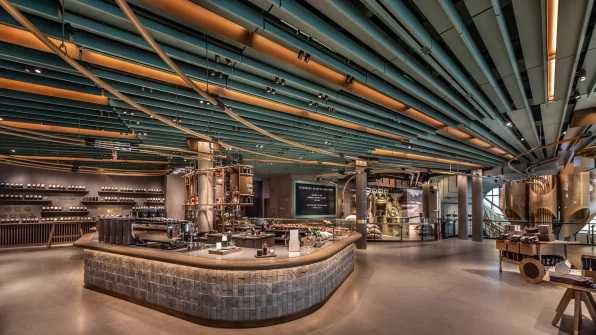 “How do you create this magical experience where you can engage the customer on different levels,” she says, “and you can bring them up and ensure they don’t just walk in the front door and say, ‘Oh, I saw the roaster!’”
“How do you create this magical experience where you can engage the customer on different levels,” she says, “and you can bring them up and ensure they don’t just walk in the front door and say, ‘Oh, I saw the roaster!’”
Each floor is visually similar—soft, white oak has found its way into every bar and piece of furniture—but thematically focused. For instance, the first floor lets you watch beans be roasted and features a Starbucks Reserve coffee bar. The second houses a fleet of iron ovens for Princi baked goods, including pastries and pizzas that will be served all day. The third floor is where the “experiential” coffee bar lives, which offers everything from nitrogen-fueled gelato mixers to brew methods like siphon pot coffee, along with expansive low tables meant to invite you to stay a while. And on the fourth floor is an alcohol bar, complete with the company’s first whiskey barrel-aged cold brew coffee (being tested here to roll out more broadly in the future).
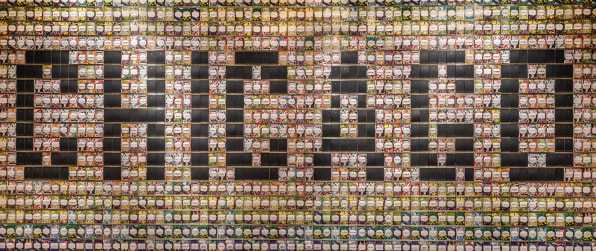 “The strategy really is, how can we bring to life immersive customer experiences around all things coffee in a way no one else can do?” says Kevin Johnson, CEO of Starbucks. It’s hard to fathom what the Chicago store cost to open and operate, but it is no doubt a lot—so much that even though the company plans to sell four stories of freshly roasted beans to customers every day, the store is unlikely to be in the black any time soon in its 25-year lease.
“The strategy really is, how can we bring to life immersive customer experiences around all things coffee in a way no one else can do?” says Kevin Johnson, CEO of Starbucks. It’s hard to fathom what the Chicago store cost to open and operate, but it is no doubt a lot—so much that even though the company plans to sell four stories of freshly roasted beans to customers every day, the store is unlikely to be in the black any time soon in its 25-year lease.
“These are long-term investments,” says Johnson. “Certainly, we have economic targets we operate these stores [with]. But the real objective is to push the envelope on the state-of-the-art experiences for customers on all things coffee.”
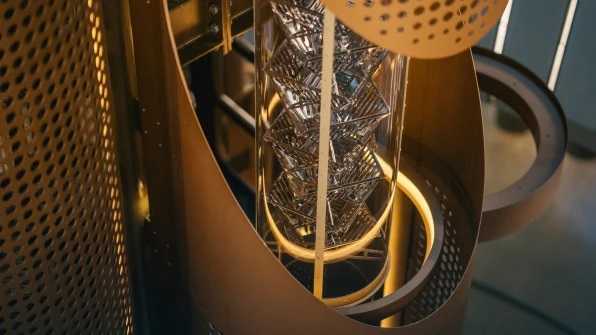
When Crate & Barrel met Starbucks
Any Chicagoan will notice that the new Starbucks exists where the old Crate & Barrel flagship used to be, inside an iconic building near the apex of the city’s Magnificent Mile of shopping. This development isn’t random. There’s a story behind it—one that illustrates how the evolution of retail has affected Starbucks, Crate & Barrel, and other global brands.
Before Howard Schultz opened his first Starbucks in the Pacific Northwest, he was a salesman for a Swedish housewares company called Hammarplast. Gordon Segal, the founder of Crate & Barrel, still remembers the young Schultz showing up at his Chicago headquarters one day, peddling some plastic shelving for spices. “I walked into a room and shook his hand, which I’d often do [with salespeople] if I wasn’t in a meeting,” recalls Segal. “Then he went on to start Starbucks Coffee years later, but I’d see him at national events . . . I bumped into him a couple times after that.”
Over the years, both men would watch their empires grow. In the late 1980s, Segal began planning a new flagship store for Crate & Barrel. He eyed an old terra cotta building, filled with medical offices, on Michigan and Erie. It was a splurge, he recounts, since the building would need to be torn down and rebuilt. But the store became a passion project for Segal, who bought the property and invested countless hours into the development he planned to lease to Crate & Barrel.
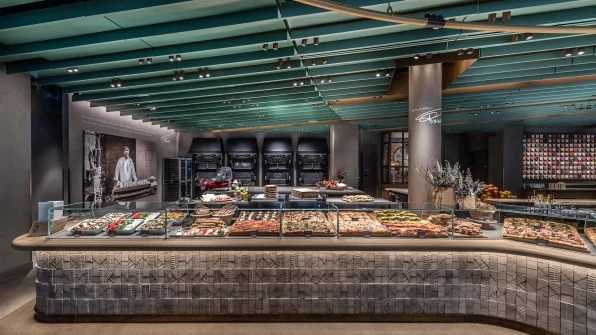 “I really wanted to open the store up in a more architectural way,” says Segal, noting that he tapped longtime collaborator John Buenz of architecture firm SCB for the design. “We went through 22 or 23 design studies of what we could do. And every one I said, no John, not good enough . . . [he was] the kindest, nicest, calmest architect. No ego at all.”
“I really wanted to open the store up in a more architectural way,” says Segal, noting that he tapped longtime collaborator John Buenz of architecture firm SCB for the design. “We went through 22 or 23 design studies of what we could do. And every one I said, no John, not good enough . . . [he was] the kindest, nicest, calmest architect. No ego at all.”
Eventually, Segal and Buenz landed on the right aesthetic: a white-cladded steel and glass building, with what he calls a “kind of Frank Lloyd Wright” rotunda. “Everyone said, ‘this is a crazy design, everything on Michigan Avenue is a square rectangle!’” Segal recalls with a laugh. “I was really starting to get anxious we’d be boycotted for destroying this area. I was hearing all sorts of people mounting concerns about what this building would look like and how it would impact this street.”
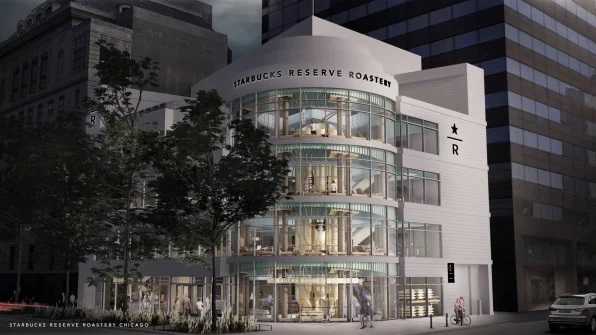 During the planning process, two real estate managers approached Segal to ask if 2,000 square feet of the ground floor of his new building might be leasable to a new coffee company looking to leave Seattle and enter the Chicago market—called Starbucks. Segal couldn’t spare the space.
During the planning process, two real estate managers approached Segal to ask if 2,000 square feet of the ground floor of his new building might be leasable to a new coffee company looking to leave Seattle and enter the Chicago market—called Starbucks. Segal couldn’t spare the space.
When the Crate & Barrel store finally opened in 1990, it was a hit. Lines wrapped around the block to visit the store, and despite tens of thousands of square feet in space, it would regularly fill to capacity during its first holiday season. The design would be copied in stand-alone Crate & Barrels set in mall complexes across America.
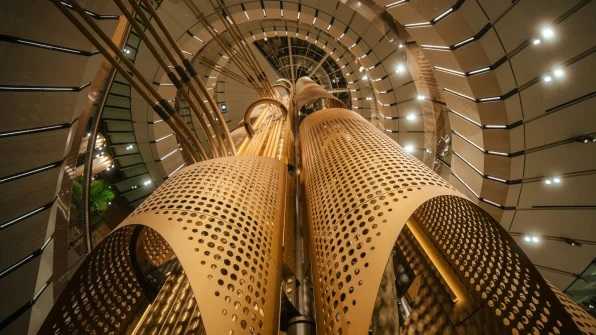
A new wave of retail spectacle
After Segal retired from his role of CEO, Crate & Barrel decided to discontinue its lease with the Michigan Avenue location. Twenty-eight years after it first opened, the store was more of a tourist attraction than it was a volume-moving retail showroom. It closed in 2018. While Segal doesn’t say it, I sense that the news came as a blow. This store was personal to him. “We put so much effort and anxiety into it, my wife and I decided we wanted to own it for a long period of time,” says Segal. That’s why he bought the land in the first place, and that’s why he wanted to lease it to the right company to occupy it next.
With the property’s future floating in limbo, Segal attended an event at the Aspen Institute where Schultz was being honored at in 2016. As Segal got up from his seat to say hello, “my wife whispered, why not tell him about Michigan Avenue?” he recalls. “[Schultz] looked at me and said, ‘Gordon! Gordon! Let’s make a deal! We’ll figure it out.’ He’s very excitable.” Eight months of extensive negotiations later, Starbucks signed the lease.
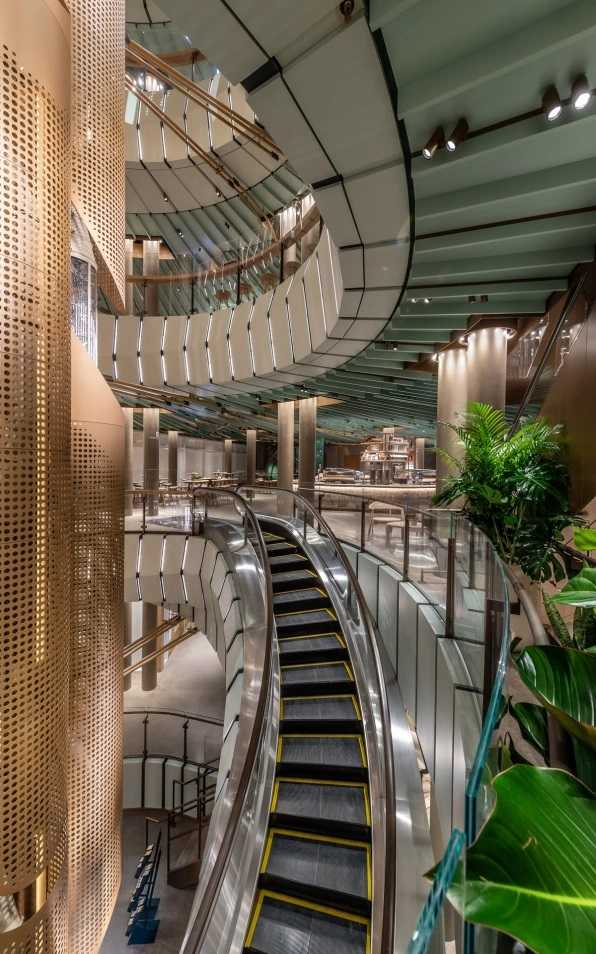 Segal had just one piece of advice for the new tenants: Add a set of stairs up to the second level, so people could get up and down the first two floors without getting stuck at the escalator. Indeed, during the mid-aughts, I lived just a few blocks away from the original Crate & Barrel. I remember taking the elevators up through the rotunda with wonder but also how you could get stuck waiting on a floor to go up or down the next escalator. It was an iconic space, yes. It was also a nightmare for visitor flow.
Segal had just one piece of advice for the new tenants: Add a set of stairs up to the second level, so people could get up and down the first two floors without getting stuck at the escalator. Indeed, during the mid-aughts, I lived just a few blocks away from the original Crate & Barrel. I remember taking the elevators up through the rotunda with wonder but also how you could get stuck waiting on a floor to go up or down the next escalator. It was an iconic space, yes. It was also a nightmare for visitor flow.
So inside the new Starbucks roastery, amidst the sea of excess—including subtly hand-painted signage, a four-story mural, leather clad everything, a two-story exposed dumbwaiter that carries baked goods from the first floor coffee shop to the second floor bakery, and of course, the aforementioned coffee bean hyperloop that snakes through the space—sits what director of design Jill Enomoto lovingly refers to as “Gordon’s grand staircase.” It’s a relatively unassuming flight of stairs that will be vital for an improved flow of the space.
Crate & Barrel closed this location largely because retail has changed: Large retail stores across the country have suffered in the age of e-commerce. Yet today, Starbucks is, in many ways, re-creating the retail spectacle that Crate & Barrel pioneered here nearly 30 years ago. This is the next wave of opulent, brick-and-mortar retail: supersize experiences that provide a sense of adventure.
“At the end of the day, we accomplished what we set out to do, to . . . create something that was very beautiful that I think will be well accepted by Chicago,” says Segal. “Their biggest problem, like we had, will be keeping people outside waiting to get in.”




